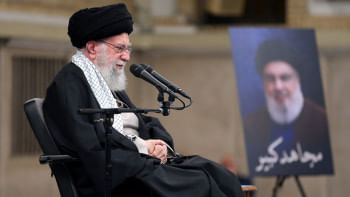Of Extraction and Yellow Filters

If you've been spending most of your days scrolling through Facebook, like most of us nowadays, chances are you have come across memes regarding the trailer of a Netflix movie called Extraction, which stars Chris Hemsworth and releases on April 24. Since it is partly set in Bangladesh, the action thriller has instantly gained a local audience. However, the trailer has also raised a question: why does Dhaka look so yellow?
One possible reason behind the use of a sickly shade of yellow to depict Dhaka is to increase discomfort and heighten tension. As Extraction's trailer promises suspense, using yellow filters seems like a logical choice. Yet, there are plenty of action-packed, adrenaline-fuelling blockbusters that make do without relying on jaundiced hues. Then again, in Breaking Bad, the scenes shot in Mexico are doused in yellow. A similar trend can be seen in Hollywood films and TV shows set in the rest of Latin America, Middle East, Africa and the Indian subcontinent. These regions have one thing in common: "first-world" countries refer to these countries as "third-world" countries. Hence, yellow might be interpreted to represent poverty.
The movies set in these places, typically action-based, also follow other clichés. The protagonist, usually a white male, is sent on a mission to a foreign land to bust drug cartels or terrorist organisations, depending on his location. These movies always end with the hero defeating local delinquents and saving the general public, which is a fundamental trait of the white saviour trope. Extraction is no different; Chris Hemsworth's character is on a mission to rescue an Indian or Bangladeshi boy.
Furthermore, other colonial undertones enhance the foreignness of the protagonist's overcrowded and squalid surroundings. He is only fluent in English, or at most knows common phrases in the local language. Much to the hero's confusion, in some cases frustration because they don't know his language, most of the natives jabber incomprehensibly in their own tongue. This implies that the locals possess less intellect than him, except a few one-dimensional characters who know English and are therefore more refined. The overall picture is not very flattering, and conveys that these places and people are uncouth and unwelcoming.
The portrayal of third-world countries in Hollywood has always been formulaic, thus helping perpetuate negative stereotypes in Western media. This narrow mindset overlooks the dynamics of these cultures and the complexities of the lives of these people. Even though these trends might not end soon, active conversation addressing such issues can help overcome stereotypes and debunk myths. Additionally, films and other visual media from developing countries can provide a more authentic portrayal of their cultures, thus aiding in broadening one's perspective.
Adhora Ahmed daydreams too much. Send her reality checks at adhora.ahmed@gmail.com

 For all latest news, follow The Daily Star's Google News channel.
For all latest news, follow The Daily Star's Google News channel. 



Comments